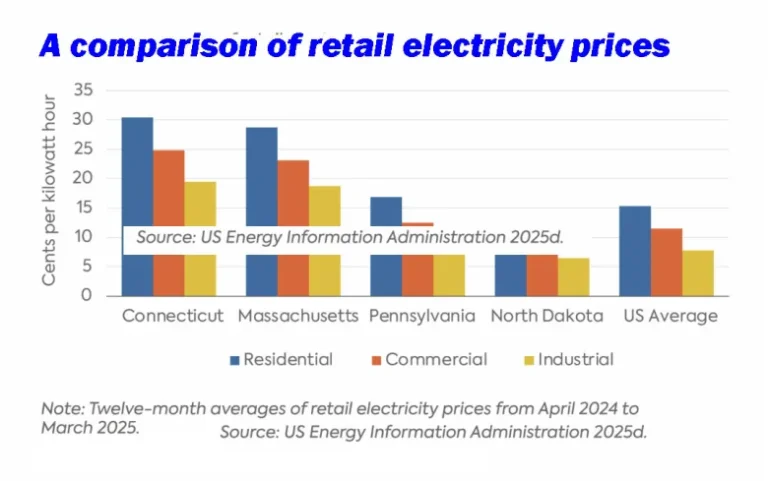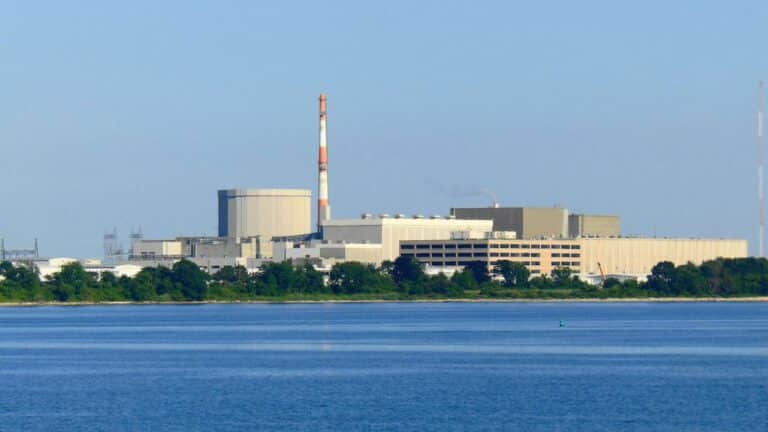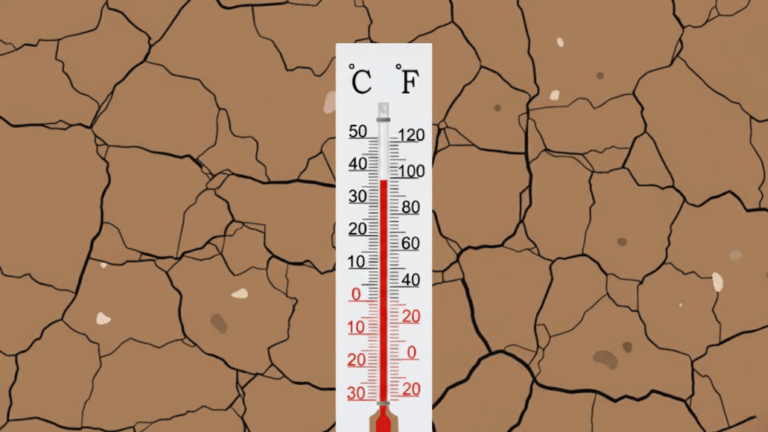‘Toothless’ sanctions
Why the world’s largest waste management company made a $3 billion bet on the US.
Current Access Level “I” – ID Only: CUID holders, alumni, and approved guests only
Testimonies & Speeches by John J. MacWilliams • January 28, 2020
Thank you, Chairman Rush and Chairman Tonko, and Ranking Member Upton and Ranking Member Shimkus, for the invitation to testify before the Subcommittee on Energy, and the Subcommittee on Environment and Climate Change, regarding the impact of wildfires on the domestic power sector and the environment.
I am a senior fellow at Columbia University’s Center on Global Energy Policy and an adjunct professor at the School of International and Public Affairs. My testimony will cover the impact of wildfires and other climate-related events on the domestic power sector, expected increases in wildfire activity across the United States as a result of climate change, the role of the power sector in wildfire risk and prevention, and lessons learned from California’s legislative responses. Finally, I will close with actions the federal government should consider taking to mitigate wildfire and other climate-related risks and to ensure a more resilient domestic energy sector.
In November 2018, the Camp Fire in Northern California destroyed over 150,000 acres, 13,972 residences, 528 commercial structures, and 4,293 other buildings, and tragically claimed the lives of 86 people.[1] As the magnitude of the damage became clear, PG&E declared bankruptcy, estimating at the time that it could face liabilities surpassing $30 billion from the 2017 and 2018 Northern California wildfires.[2]
The bankruptcy of PG&E has been called the first climate change bankruptcy. Details of the bankruptcy are complex and not the subject of this testimony, and certain aspects of the California ecosystem and regulatory framework are unique. However, the California wildfires and resulting bankruptcy of one of the nation’s leading utilities are important as a case study for how we will manage these complex issues going forward and appropriately allocate the inevitable, enormous, and increasing costs of climate change threats and damage to our nation’s critical infrastructure among numerous stakeholders, including ratepayers, investors, and federal and state taxpayers.
In August 2019, Columbia University’s Center on Global Energy Policy published a research paper titled “PG&E: Market and Policy Perspectives on the First Climate Change Bankruptcy.”[3] In that paper, my co-authors Sarah La Monaca and James Kobus (who are here with me today) and I sought to trace the factors that led to the bankruptcy, assess wildfire and climate risk broadly across the US power and utility sector, examine financial market and policy responses to the bankruptcy, and provide recommendations for policymakers and other stakeholders.
As discussed in our paper, while dynamics specific to PG&E and California’s liability framework were factors, climate change played a material role in the wildfires and PG&E’s subsequent bankruptcy. This is because climate change has created conditions in California and elsewhere that make fires more intense, more damaging, and more likely to occur. Researchers at Columbia University, the University of Idaho, and the University of California, Los Angeles have found that climate change has already diminished autumn rains, increased winds in the western US, and driven an increase in daily maximum temperatures of more than three degrees Fahrenheit, measured relative to the late 1800s.[4]This has led to tinderbox conditions as brush and vegetation become drier and more prone to burning. Putting these trends together, another study estimates that climate change has caused an extra 4.2 million hectares of wildfire damage in the western United States since the 1980s—nearly double the number of acres burned than would otherwise have been expected.[5]
Although the magnitude of the forecasts varies, the scientific literature almost universally projects significant climate-change-driven increases in wildfire activity and intensity across the United States by the end of the century.[6] The United States government’s Fourth National Climate Assessment, released in November 2018, notes that “by the middle of this century, the annual area burned in the western United States could increase from two to six times from the present, depending on the geographic area, ecosystem, and local climate.”[7]
Importantly, while current wildfire activity in California is of national concern given its population, the size of its economy, and its climate leadership, the largest increases in wildfire activity are expected in other states. The map below, taken from a 2015 study in the International Journal of Wildland Fire, shows how different regions across the US are likely to be affected.[8] As is painfully evident in the map, many regions are likely to face growing danger, notably the Southeast and Northwest parts of the country.[9]
 Figure 1: Projected increase in “very large fire weeks” by midcentury (2041-2070) compared to 1971-2000.
Figure 1: Projected increase in “very large fire weeks” by midcentury (2041-2070) compared to 1971-2000. As the California situation has shown, the power sector can be expected to both cause wildfires and be susceptible to them. Although a wide variety of factors contribute to wildfire ignitions, electrical equipment has been a leading proximate cause of some of the most damaging wildfires in California, including the 2018 Camp Fire in California.[10] This can occur when distribution or transmission lines fail in high wind or other harsh weather conditions, igniting nearby vegetation and sparking rapidly spreading wildfires. However, wildfires can also be damaging to electric utility companies by causing physical damage to energy infrastructure, disrupting power service, and even leading to severe financial distress.
First, wildfires cause direct physical damage to utility infrastructure such as power lines and substations. But the risk to energy infrastructure from climate change is broader. A 2019 paper from BlackRock Investments details climate risks to the utility sector, noting that as a result of climate change, storm surge, high winds, and flooding from hurricanes pose increased risks to several categories of utility assets, including power plants and transmission and distribution networks.[11] The United States Department of Energy estimates that sea level rise is likely to cause storm-surge exposure increases of 12 to 40 percent for power plant assets and 18 to 44 percent for substations.[12]
Second, wildfires pose a threat to reliable electricity service. While the fires themselves can disrupt electricity service in the affected areas, a new and emerging trend has further underscored the problem: preventative power shutoffs. One of the tools California is now using to combat wildfire ignitions is its Public Safety Power Shutoff (PSPS) program, in which the state’s utility companies preemptively shut off electricity service when high-risk weather conditions suggest a heightened possibility of electrical equipment wildfire ignition.
In an effort to reduce wildfire risk, utility companies have recently implemented these preventative blackouts, cutting power to millions of customers on several occasions in the fall of 2019. While it’s not the focus of my testimony today, these preventative steps can have severe impacts on health and safety, as well as economic repercussions.
These events highlight the escalating costs of providing reliable electricity service in a country that is rapidly becoming more vulnerable to the negative effects of climate change. If customers are going to continue to demand the near 100 percent reliability of electricity service that they are accustomed to, large infrastructure investment will be required to reduce the damage caused by wildfires, sea level rise, and other climate-related events, and to make the electric grid and related assets more intelligent and more resilient.
Third, wildfires present a unique financial threat to US power and utility companies because they are the one type of climate-related disaster that such companies may be shown to have directly caused. In most states (with California as a notable exception), if a utility company is found to have operated its system prudently, any resulting property damage and other costs are typically borne by private insurance companies and property owners rather than the utility itself. If a utility is found to have operated its system imprudently, however, the company could be held liable for such damages, which are likely to be in the billions of dollars. Damages of this magnitude can bankrupt a utility company, as we’ve seen with PG&E. In either case, climate-change-driven wildfire activity will increase costs to utility-sector stakeholders, including investor-owned utilities, state and local governments, ratepayers, and taxpayers. These increased costs will in turn place financial stress on utility companies and crowd out essential investment in renewable energy and grid upgrades.
In July 2019, California Governor Gavin Newsom signed into law a wildfire insurance package that is the first in the nation to address major utility financial risk resulting from increasing climate risk. The bill created a $21 billion insurance fund, capitalized through ratepayer contributions of $10.5 billion and another $10.5 billion shared proportionally among California’s investor owned utilities. Separately, the legislation established a Wildfire Safety Advisory Board, staffed by industry and academic experts, to advise the California Public Utility Commission and to review utilities’ implementation of specific safety requirements, including having an approved fire mitigation plan, establishing a fire safety committee, and tying executive compensation to safety culture.
Overall, California’s policy response provides important lessons for designing comprehensive frameworks for allocating the costs from climate change across investors, ratepayers, and taxpayers. The legislative response, while not without its drawbacks, created a regulatory structure that is designed to balance accountability and increased oversight with maintaining the financial health of the state’s utilities. Ultimately, utility companies are central actors in making crucial grid upgrades and renewable energy investments over the coming years, and it is in no one’s best interest for investor-owned utilities to file for bankruptcy every few years. At the same time, utility companies need to be held accountable for their wildfire ignitions and incentivized to make preventative investments. Our Columbia report discusses the nuances embedded in the California legislative response and outlines additional lessons other states can take away from the initiative.
While much of electricity sector regulation is conducted through state legislatures and public utility commissions, the federal government can take steps to help prevent, mitigate, and adapt to the growing threats presented by wildfires and other climate-change-related disasters. Interestingly, this would not be the first time that electric-transmission-related incidents have led to congressional action. The Northeast Blackout of 2003—the worst US blackout of all time—was caused by a sagging transmission line in Ohio that came into contact with trees that had not been adequately trimmed.[13] Congress responded by enacting the Energy Policy Act of 2005, which strengthened the North American Electric Reliability Corporation reliability requirements and granted the Federal Energy Regulatory Commission (FERC) greater ability to levy penalties. Congress has an opportunity to take similarly transformative action today.
First and foremost, Congress should focus on the broad impact climate change will have on our environment, on people, and on our economy. The California wildfires are a vivid example of the devastation that climate change will increasingly bring. We are encouraged by the efforts of this committee to consider how we can bring together public and private sector leaders to address climate change and US greenhouse gas emissions, including the CLEAN Future Act framework introduced by Energy and Commerce Chairman Pallone, Environment and Climate Change Chairman Tonko, and Energy Subcommittee Chairman Rush that sets new targets to achieve a 100 percent clean economy by 2050. As my colleagues Dr. Noah Kaufman and Dr. Julio Friedmann have testified, we need all solutions on the table to decarbonize our economy and to achieve net-zero greenhouse gas emissions by 2050, to avoid the most catastrophic effects of climate change. [14]
In particular, researchers at the Center on Global Energy Policy have studied decarbonization options available to the federal government in great detail. In his recent testimony before the Subcommittee on Environment & Climate Change, Dr. Kaufman argued that a carbon price should be part of any comprehensive climate policy, as it encourages emissions reductions wherever and however they can be achieved at a low cost without needing to know beforehand what those opportunities will be. He has further studied the interaction of a carbon tax with other potential climate policies and recommends policies that are complementary rather than redundant to a carbon tax. These complementary policies include funding innovation, encouraging energy efficiency investment, and investing directly in low carbon infrastructure, among others.
Second, massive infrastructure investment will be required to modernize the grid to make it more intelligent and responsive to the demands of a rapidly changing electric sector and to provide resiliency in the face of increasing threats from climate change. Although the government has an important role to play in this funding, ultimately this will require large amounts of private sector capital. Indeed, challenges of this magnitude cannot be solved without significant private sector investment, and Congress should examine ways that it can encourage such capital flows.
Public-private partnerships are one vehicle for infrastructure investment of this magnitude. Such partnerships can take many forms, but one mechanism my former colleagues at the Department of Energy and I have advocated is the creation of a National Infrastructure Bank. There is a long history with respect to this subject, and there are important legislative and administrative equities that need to be considered, but given the pressing infrastructure challenge facing the country, I would strongly encourage Congress to take a fresh look at the possibility of creating such an institution. The recent proposal to create a National Climate Bank is a positive step in this direction.
In addition, FERC could take steps to incentivize greater fire prevention and grid hardening investment in the utility sector. FERC regulates interstate electric transmission assets and in the past has used specialized profit incentives (often referred to as “ROE-adder” incentives) and accelerated cost recovery mechanisms to direct private capital toward preferred initiatives such as regional transmission organization participation and transmission enhancement projects.[15] Similar mechanisms could provide a financial incentive for utility companies to prioritize grid resiliency and fire prevention investments over other types of investments available to them.
A large amount of institutional capital is available to invest in infrastructure, and these investors want to invest in energy infrastructure projects if they can meet their risk and return objectives and their fiduciary responsibilities to their investors.
Third, Congress should support increased research, development, demonstration, and deployment funding for wildfire prevention methods and technologies and grid modernization. The Department of Energy and its 17 National Labs provide enormous technical capabilities that are currently being applied to meet these challenges for the nation. As a senior advisor to Lawrence Livermore National Laboratory, I am aware of the work they are doing to help the California Public Utility Commission in this area. Since wildfire and climate-related risks are nationwide risks, other national laboratories such as Idaho National Laboratory and the National Renewable Energy Laboratory have significant technical capabilities that they can also provide to the effort. Promising research is being conducted on sensor technology, high altitude wind forecasting, high performance computing for fire simulation and prediction, and underground wiring methods. However, much work remains to be done.
I would like to thank the Subcommittees for holding this hearing on the impact of wildfires on the domestic power sector and the environment. The California wildfires should be a call for action regarding the adverse impacts of climate change. As tragic as these events have been, one only needs to look at Australia to see the potential for even greater devastation to come as a result of wildfires and other climate-change-related disasters. Managing the adverse impacts from climate change will require massive, sustained, and thoughtful investment in technology and infrastructure. The first climate change bankruptcy is an important test case for how our country is going to allocate the costs of preventing, mitigating, and responding to climate-change-related disasters among numerous stakeholders, including ratepayers, investors, and state and federal taxpayers.
[3] https://energypolicy.columbia.edu/research/report/pge-market-and-policy-perspectives-first-climate-change-bankruptcy.
[4] https://agupubs.onlinelibrary.wiley.com/doi/full/10.1029/2019EF001210https://www.nature.com/articles/s41558-018-0140-y.epdf?author_access_tok….
[10] https://www.utilitydive.com/news/pge-failed-to-properly-inspect-tower-that-caused-camp-fire-cpuc-safety-in/568407/https://www.levinsimes.com/electrical-power-3rd-most-common-cause-of-wil….
[12] https://www.energy.gov/sites/prod/files/2015/07/f24/QER%20Analysis%20-%20Climate%20Change%20and%20Energy%20Infrastructure%20Exposure%20to%20Storm%20Surge%20and%20Sea-Level%20Rise_0.pdf.
Connecticut needs an honest debate, and fresh thinking, to shape a climate strategy fit for today, not 2022.


As diplomats meet in Brazil for COP30, global resolve to tackle the climate challenge appears badly frayed.

Full report
Testimonies & Speeches by John J. MacWilliams • January 28, 2020